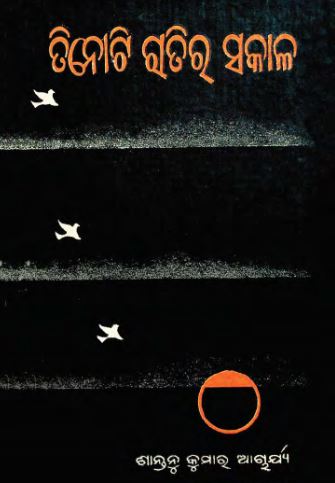Published in 1969 and reissued in 1975, “Tinoti Ratira Sakala” by Santanu Kumar Acharya stands as a significant contribution to Odia literature. The novel deftly captures the nuances of social life in Odisha, weaving a complex narrative that reflects both personal struggles and broader societal issues. As readers traverse through the narrative landscape of this compelling piece, they encounter a mix of intrigue, emotion, and profound observations that make the work a timeless exploration of human relationships and societal dynamics.
At its core, “Tinoti Ratira Sakala” delves into the intricacies of rural life, spotlighting the cultural fabric that defines the Odia community. Acharya documents the changing socio-economic conditions, shifts in values, and the enduring spirit of the common people. The novel is set against a backdrop of tradition and modernity, where characters grapple with their identities in the evolving landscape of post-colonial India. The title itself, translating to “All of One Night,” metaphorically suggests a range of experiences that occur under the veil of darkness, hinting at hidden truths and unforeseen consequences of social interactions.
The protagonist of the story serves as the lens through which readers witness the trials and tribulations faced by individuals in a society stricken by economic difficulties and moral dilemmas. Key themes such as love, betrayal, sacrifice, and redemption emerge as the narrative unfolds. Through rich character portrayals, Acharya navigates the complexities of human emotions, embedding political and social commentary within personal story arcs.
One of the most notable aspects of the novel is its emphasis on women’s roles in society. Acharya portrays female characters with depth and complexity, challenging traditional gender norms while highlighting the struggles they face in finding their voices in a patriarchal system. As the story progresses, themes of empowerment and resilience resonate deeply, inviting readers to question societal expectations and advocate for change.
Moreover, the socio-political landscape of Odisha during the late 20th century provides a poignant backdrop. “Tinoti Ratira Sakala” reflects the transformation occurring within rural communities, often caught in the tension between age-old customs and the inexorable march of modernity. These transformations lead to the emergence of new societal issues, including class struggles and generational conflicts, making the narrative particularly relevant for contemporary readers.
Acharya’s writing style further enhances the reading experience. His use of vivid imagery and lyrical prose invites readers to immerse themselves in the emotional and physical settings of the novel. Each chapter is crafted with meticulous attention to detail, evoking a strong sense of place and time that draws the audience into the characters’ lives.
In conclusion, “Tinoti Ratira Sakala” is not just a tale of individual journeys but a mirror reflecting the societal changes of its time. Santanu Kumar Acharya’s exploration of social issues, combined with his rich character development and evocative language, renders this novel a significant work in Odia literature. It encourages readers to reflect on their own realities, fostering an understanding of the interconnectedness of personal and societal narratives. Even decades after its publication, the novel remains relevant, resonating with new generations and continuing to inspire discourse about the complexities of human experience and social realities.
Books Info
| Books name | Tinoti Ratira Sakala/ତିନୋଟି ରାତିର ସକାଳ |
| Editor | Santanu Kumar Acharya |
| No Of pages | 206 |
| Publisher | Grantha Mandira |
| Publication | 1969, 1975 2e. |
| Printed At | Grantha Prakashani |
| Distributor | NA |

